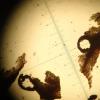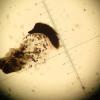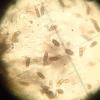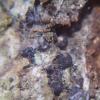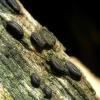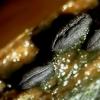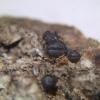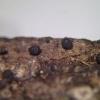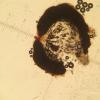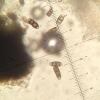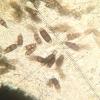
18-12-2025 21:17
Pol DebaenstThe identification took me to Byssonectria deformi

15-12-2025 07:09
 Danny Newman
Danny Newman
indet. Rutstroemiaceae sp. on unk. fallen leavesMc

19-12-2025 10:10
Patrice TANCHAUDBonjour, récolte réalisée en milieu dunaire, a

18-12-2025 17:23
 Bruno Coué
Bruno Coué
Bonjour,je serais heureux d'avoir votre avis sur c

18-12-2025 18:07
Margot en Geert VullingsThese plumes were found on rotten wood.They strong

17-12-2025 18:35
 Michel Hairaud
Michel Hairaud
Bonjour à tous/Hi to everyone I am passing along

15-12-2025 15:48
 Danny Newman
Danny Newman
Melanospora cf. lagenaria on old, rotting, fallen

15-12-2025 15:54
 Johan Boonefaes
Johan Boonefaes
Unknown anamorph found on the ground in coastal sa

15-12-2025 21:11
 Hardware Tony
Hardware Tony
Small clavate hairs, negative croziers and IKI bb
 Hello,
Hello,I found that in an herbarium sheet, probably on Fagus sylvatica, in France, Puy-de-Dôme (63). Do any one can confirm / infirm the ID ? I'm not conviced by the general shape...
Many thanks for the help!
Rémy

Hi Remy,
although the macrofoto is not very distinctive and does not show the form of the coffee beans I think there can be no doubt because of the very unique spores.
Regards from Lothar

Many thanks for your very quick answer !
I agree that I make very poor quality picture - not sure yet if it is because of the photographer, or the material ;)
In fact, I was not sure for this ID because many herbarium sheets I am currently reviewing (for epiphytic lichens) contains this species, and most of them are more "sphaerical" that coffee bean shaped... All are from the same locality.
Cheers,
Rémy

Hi Remy,
the growth on bark of living deciduous trees is very typical for H. pulicare. But - if the ascomata are not hysterothecia, it must be something different, anyway ...
Best regards from Lothar

Thank you for the precision ; I will try to ID other specimen in order to be sure !
Bests,
Rémy

Hi Remy,
the pictures show clear hysterothecia in my opinion. Do they have the same spores (4-celled with terminal hyaline cells)? Then it ist H. pulicare.
Maybe unripe or badly developed specimens do not form the typical slit very distinctly. Peters fotos are very typical.
Regards from Lothar
this goes not without microscopic examination. If the scales of the photos 1:1 with the micro, it cannot be H. pulicare, the spores would be too small there.
Greetings Peter.
now everything is clear.
Greetings Peter.

